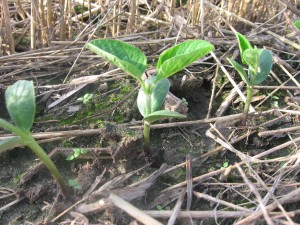We were hoping to be about half way finished with our soybean plantings by now, but we haven’t put a planter in the field in two weeks. The rain continues to delay us, but I hope that we will get back into the field next week.
The rain and cooler weather has lowered soil temperatures somewhat and this means that we need to take a few extra precautions, especially pertaining to seedling disease. I wrote a detailed blog a few years ago on seedling disease; little has changed and, for more details, you can view that blog here:
Fungal Seedling Disease in Soybean
Planting soybean in cool soil will lead to delayed emergence and increased chance of seedling disease that can reduce stands, weaken emerged plants, and inhibit early-season growth. I stress that the greater time required for emergence, the greater probability that the seed will become infected with soil-borne disease. If you are planting into cool soils, I strongly suggest using fungicide-treated seed as an insurance against seedling disease. These treatments will protect the seed and seedling if emergence is delayed.
But, seed treatments should not be a substitute for other practices that encourage rapid seedling emergence. Here is my checklist for insuring a good stand free of seedling disease:
- Know the germination and vigor of your seed; adjust the seeding rate accordingly.
- Insure good soil-to-seed contact by properly setting your planter to cut through the residue and penetrate to the proper depth.
- Plant soybean seed ¾ to 1 inch deep into good soil moisture. Planting deeper will delay emergence
- Consider fungicide seed treatments if planting into cool soils.

